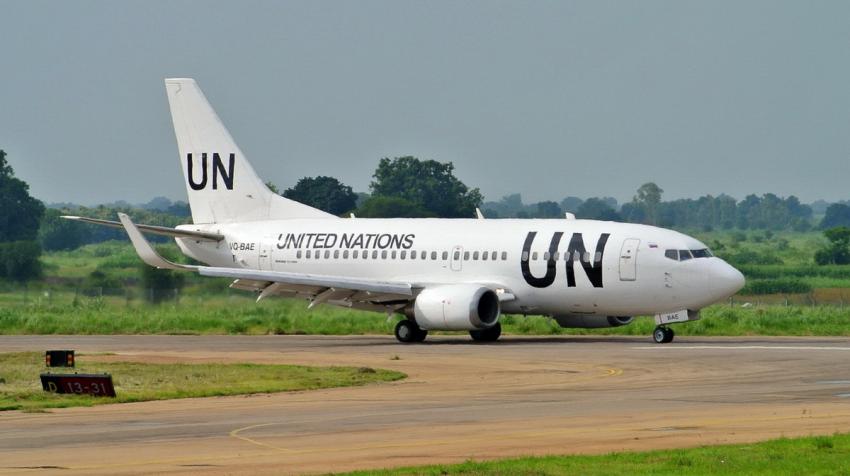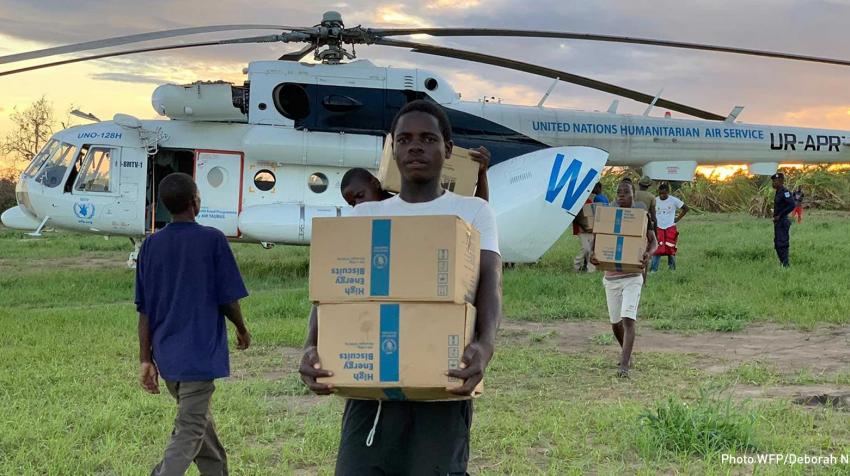Before COVID-19 severed us from our skies and from each other, air transport was providing unique connectivity and significant socioeconomic benefits to citizens, societies and businesses all over the world.
Close to 4.5 billion passengers and 60 million tonnes of freight were being moved around the world each year before the pandemic on just under 40 million flights. In the meantime, aviation’s direct and indirect impacts were generating employment and sustainable careers for over 88 million men and women worldwide, while contributing more than $3.5 trillion to global gross domestic product.
The scale of these contributions aligns with the fact that, of the 12 million passengers a day who used to take to the skies pre-pandemic, well over half were international tourists. They also reflect air travel’s unique capability to connect local producers to distant suppliers, and local suppliers to distant markets.
In addition to these macroeconomic indicators, we can’t forget as well the very basic quality of life benefits which accrue to each of us as global citizens in the light of States’ diplomatic cooperation on international aviation.
Whether in reference to our natural longings to explore our planet’s ecological, historical or cultural diversity, or simply to reconnect with distant friends and loved ones, the ability to travel quickly, safely and securely, anywhere in the world affects all of our lives in ways many take for granted.
From an overall standpoint, the improving global prosperity being achieved through these aviation development dynamics was helping countries everywhere invest in and succeed towards the Sustainable Development Goals (SDGs) of the 2030 Agenda in the pre-pandemic period.
The International Civil Aviation Organization (ICAO) has been monitoring these aviation contributions to fully 15 of the 17 SDGs, illustrating just how much of our socioeconomic prosperity, both individually and collectively, relies on our connections to one another by air.
Onset of the pandemic
The ability of aviation to drive these global benefits came to a grinding halt earlier this year, when COVID-19 was ultimately identified by the World Health Organization (WHO) as a Public Health Emergency of International Concern (PHEIC). Countries quickly and prudently closed their borders to contain the pandemic’s spread, and by April 2020 the number of people flying had plummeted by over 90 per cent.
ICAO is now estimating a 60 per cent overall passenger decline this year, and close to half a trillion dollars in sectoral revenues lost. As of early November 2020, over half of the international routes once serviced by airlines and airports had been lost.
This trend will likely continue in the near-term, even as the promise of new testing solutions and vaccines begins to be realized. Anything in terms of meaningful recovery for the international air transport network will likely not take place until 2022, and a return to pre-COVID growth trends could take several more years after that.
By severing our international connections by air in this manner, COVID-19 has cut off businesses from clients and tourists from destinations and posed disproportionate threats to the poor and vulnerable.
Landlocked and small island nations have been especially hard hit by these effects, but in point of fact, the profound and cascading negative effects on transport, tourism, and many other areas of socioeconomic development are being felt in all countries, everywhere. Hundreds of millions of livelihoods have been placed in jeopardy as a result.

Public and private sector leaders also need to recognize that a world not connected by scheduled flights is a world where countries will face serious challenges to their short- and long-term needs for food supplies and medical products and equipment, and many other perishable and high-value goods. E-commerce activity, which is highly reliant on air cargo services, and which has been a beacon of economic growth during the pandemic period, would also become seriously and globally constrained.
These impacts, in addition to more job losses globally, would further reduce the tax bases of national planners—including with respect to decreased or abandoned investments in sustainable development.
Also at risk would be our collective global capacity to reconnect the world once COVID-19 is finally behind us, and to lift it once again into broad-based and inclusive economic recovery.
The ICAO COVID-19 response
Since the early stages of the COVID-19 outbreak, ICAO has issued calls to States and the civil aviation industry to observe relevant global aviation standards and the WHO International Health Regulations, and we took quick action to address some immediate needs in terms of special alleviations to international standards in order to safely maintain essential air services.
We also rapidly established a comprehensive set of proprietary pandemic monitoring platforms, tools and resources for both States and industry, and innovated a global airport real-time status app in response to requests from the United Nations Humanitarian Air Service, managed by the World Food Programme (WFP), and which proved essential to the successful coordination of the earliest COVID-19 humanitarian efforts.
The seven ICAO Regional Offices continue to serve as key coordination points for countries and industry as this work continues. They are also on the front lines in aligning country-to-country response measures based on the “Take-off” recovery guidelines issued by the aviation recovery task force of the ICAO Council, our resident governing body of 36 States.
ICAO has spared no effort to provide guidance to make it possible for aviation to restart and recover, as well as targeted assistance to States in need under its No Country Left Behind (NCLB) initiative.
The Regional Offices’ close and continuous coordination with their accredited States, and ICAO Headquarters, is currently helping improve the coordination between air transport and public health officials State-to-State and accelerate industry recovery where medically prudent.
This crisis calls for globally and regionally harmonized, mutually accepted measures, and taken together, actions of ICAO have helped keep critical supply chains operating, expedited the repatriations of thousands of stranded citizens in every world region, maintained operations for necessary air crew and personnel, and maintained much needed humanitarian and emergency air service capacities.
United Nations system partnership and effectiveness
As bad as things have been for international aviation since COVID-19 struck, they could have been much worse. That’s because ICAO and WHO, together with States and key national and regional public health stakeholders, had already begun to consider and address pandemic risks to aviation long before this latest pandemic.

Pursuant to the SARS outbreak and the lessons learned from it, we had worked to bring governments and others together under the Collaborative Arrangement for the Prevention and Management of Public Health Events in Civil Aviation, or CAPSCA. Its rapid response planning and coordination was pivotal to aviation’s earliest actions.
As aviation relies on the smooth flow of passengers and goods among different modes of transport, ICAO has engaged in close collaboration with the United Nations and other international organizations in areas of international tourism and trade.
I must therefore express our deep appreciation to our colleagues in the United Nations World Tourism Organization, International Maritime Organization, International Organization for Migration, the International Labour Organization and WFP for the important partnership and collaboration they’ve also been providing in support of our shared objectives.
It has also become evident that the COVID-19 crisis provides us with an opportunity to develop still stronger partnerships that can accelerate the identification and roll-out of sustainable solutions to global challenges. We are now convinced that going back to normal post-COVID-19 is no longer an option, and that holistic and cross-sectoral collaboration at all levels will put the world back on track to achieve the SDGs.
We must therefore align COVID-19 response and recovery efforts with the SDGs, and work together to deliver as “One UN”. It is also crucial to recall the collective vision of the United Nations to tackle the inequalities exacerbated by the pandemic through a “new social contract for a new era”, as advocated by United Nations Secretary-General António Guterres on Nelson Mandela International Day in July 2020.
Opportunity from crisis
It’s important for all leaders to remember that such fundamental turning points as this provide us not only with challenges, but also important opportunities to build back better.
With this in mind, ICAO has already begun encouraging that governments’ economic and financial support packages should be designed to strengthen the financial viability of the industry, improve risk management and crisis preparedness across the entire aviation sector, and prioritize greener air services and more ambitious climate targets and actions.
We will also look to build upon the more efficient and comprehensive coordination which COVID-19 has engendered between ICAO and WHO, as well as other international organizations; leverage new infectious disease best practices and other health-related improvements; and deploy the latest screening technologies and other digital solutions to keep our network more resilient and sustainable in the face of future pandemic threats.
Innovation will be critical to success in all of these areas, as it will be to our United Nations system work to reconnect the world’s vulnerable and isolated, and put attainment of the SDGs back on track during this critical Decade of Action.
In the immediate weeks ahead, our United Nations partnerships will be more critical than ever as we accelerate all efforts towards assuring the efficient and equitable global distribution of COVID-19 vaccines. ICAO has been proud to fulfil its important multilateral role during these challenging times, and we’re confident that a brighter future lies ahead.
Note: The data cited in this article were provided by ICAO.
The UN Chronicle is not an official record. It is privileged to host senior United Nations officials as well as distinguished contributors from outside the United Nations system whose views are not necessarily those of the United Nations. Similarly, the boundaries and names shown, and the designations used, in maps or articles do not necessarily imply endorsement or acceptance by the United Nations.




